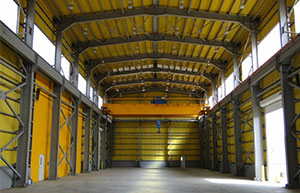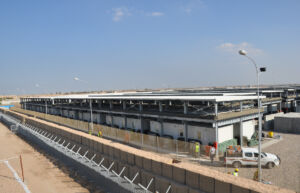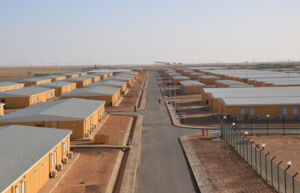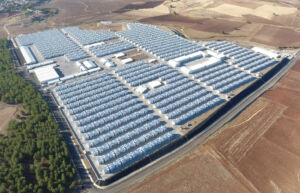Advantages of Prefabricated Modular Buildings
Here we mention some of the advantages of prefabricated modular steel structures, the future of the construction industry;
Earthquake Resistance: When prefabricated modular steel structures are designed in accordance with the soil structure of different regions, they bend, deform, but are difficult to collapse during an earthquake thanks to their flexible and light structure.
Since the weight of the steel structure is approximately 50% less than in reinforced concrete structure, the earthquake force’s impact on the structure will decrease at the same rate. This feature of ductility gains prominence under dynamic loads since the energy absorption capability is provided in the deformations above the elastic range. Under repeated loading, the unidirectional and limited energy absorption ability of the reinforced concrete structure decreases and deteriorates with each repetition, then fracture occurs without deformation. In the steel structure, when the elastic limits are exceeded, in other words, when the loads which affect the structure is higher than expected, the steel structural members primarily change shape and deform thanks to their high deformation capacity. The energy generated during the deformation is absorbed and the structure survives under the affecting loads.
Lower Carbon Footprint – Using High Strength Structural Steels Reduces Carbon Footprint: Prefabricated Modular Steel Buildings have a low carbon footprint due to reasons such as being pre-designed, construction in a shorter time and shorter equipment operating times. All materials used are recyclable and produce much less waste.
Ultimate Green Material Steel and Recycling: There are two ways to consider a building “green”. The first is the way the materials help with operating costs, and the second is how the materials used reduce the environmental impact. Steel is one of the only building materials that can be recycled many times at the end of use and do not lose their strength.
Environmentally Friendly and Its Impact on Traffic: Another factor contributing to the sustainability of prefabricated modular steel buildings is that the majority of the prefabricated modular construction process takes place off-site. The negative effects of the project on the environment and the site are significantly minimized. Thus, while the number of vehicles and heavy equipment needed in the site and their use decreases, gains such as less environmental pollution and increased occupational safety occur.
Shorter Construction Process: One of the most important advantages of prefabricated modular steel structures is that construction can be completed in a much shorter time than traditional methods.
Safety and Security: Prefabricated modular structures provide important advantages when evaluated in terms of occupational and worker safety. The risk of occupational accidents decreases significantly due to the production carried out in our production facilities operating with local and international quality standards.
Climate conditions: Prefabricated modular steel structures can be produced in accordance with all seasonal conditions with current technologies and new materials. The interior insulation materials used in the buildings are selected in accordance with the climatic conditions of the geography where the project is carried out. For example, prefabricated modular steel structures designed and produced by DORCE are durable and sustainable structures in harsh climatic conditions of regions like Africa and Siberia, which are beyond the range of +50 to -50 degrees Celsius.
Demountable, portable and rebuildable structures: Prefabricated Modular Steel structures are manufactured in the factory environment and shipped to the site. These building systems allow disassembling and assembling for reuse in different locations after the assembly is completed and used for the required period.
Plug & Play: It is a building system that allows a building to be entirely completed in the factory environment from the production to the final assembly, and the final connection lines such as sanitary and electrical installations can be sent to any region as one or several ‘modules’. Each module is built and shipped to the site, fully equipped with interior and exterior cladding elements, wall panels, roof, flooring, bathrooms, kitchen equipment, lighting. After the modules are shipped to the field, they are ready for immediate use, either single or combined, depending on the intended use.
For Emergency Disaster Response: Considering the urgency and time factor after earthquakes and other natural disasters, modular structures contribute to the provision of humanitarian aid within the shortest time.
Dorçe has completed projects and made donations by actively participating in disaster management through institutions such as AFAD, United Nations, and JICA, after many earthquakes such as 1999 Marmara Earthquake, 2003 Iran Bam Earthquake, 2011 Van earthquake and 2020 Elazığ Earthquake.



